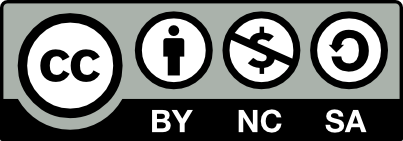Economic Utility
Lesson Topic:
Economic Utility
Lesson Description:
Students will discover and present on how the economic utilities impact the marketing of a product.
Learning Goals/Outcomes:
Students will determine economic utilities for a product and how they impact and are impacted by business activities.
Nebraska Standards:
NE.BMM.HS.6.1.D
Teacher Planning:
Equipment/Materials/Software Needed:
Various items from around the classroom or home, one for each student. It helps if these items are needed at different points during the calendar year.
Time Required for Lesson:
One 45-minute class period, depending on number of students in the class
Diagram/Setup:
N/A
Technology Use:
Software:
Word Processing software, if desired
Hardware:
Computer, if desired
Instructional Plan:
Anticipatory Set/Pre-Activity:
Ask the class the following:
- Would you have much use for a winter coat in the middle of July?
- Would you have much use for a Roomba if you did not know how to use it and there weren't any directions?
- Would be happy if I gave you all the parts of a recliner but it wasn't put together?
- Would you be able to purchase products if my store only accepted checks?
- Would you get much benefit if my store was extremely difficult to find?
Go on to explain that these questions all relate to types of economic utility respectively: time, information, form, possession, and place.
Benefits/Explanation/Real-World Connection:
The five economic utilities affect purchasing decisions. Marketers must ensure that customers are able to purchase their products when and where they are needed, in the correct form, and with the necessary information.
Activities (i.e. instructions, warm-up, lesson, cool-down):
Using a textbook or the Internet, discuss the five economic utilities: form, place, time, possession, and information.
After discussing the economic utilities, the teacher will demonstrate the activity for the students.
Example demonstration: Pencil
Teacher will show the students a regular wooden pencil and will describe the pencil in terms of the five economic utilities:
- Form: The pencil is available fully put together. I have a ready-to-use pencil, not graphite, wood, metal, paint, and an eraser. I would have no use for those five items separately, but put together, I can use them in the form of a pencil. Having them in a usable form provides utility.
- Place: This particular pencil was available in the back-to-school supplies. It was located in a large store where many people shop, and it was near the other writing utensils. This location gave the pencil place utility because it was easy to find, and it was in a logical location.
- Time: The pencil was available before the beginning of the school year. It was available at a time when many would be needed. This increased the value for me because it was available when I needed it.
- Possession: I was able to pay for this pencil in a variety of ways. The store accepted cash, check, or credit card. This made the pencil more valuable to me because it was able to pay in multiple ways, meaning, if I did not have cash, I could still buy the pencil.
- Information: The pencil was in a box with other pencils that was advertised in the store's newspaper insert. The box it came in told the quantity of pencils, what type of lead the pencil contained, and it told information about the eraser. This information made the pencil more valuable to me because I knew more about the pencil.
When finished with the example, the teacher should hand out one item to each student. The students will be given five minutes to consider the five economic utilities for their product. When it is their turn, the students will each show their item to the class and describe the item in terms of each economic utility, as was demonstrated by the teacher with the pencil.
Closure:
Divide the students into five groups, one for each economic utility. Within their group, the need to create their own definition for the utility assigned and write it on a post-it note. The groups should give you the post-it note on the way out of the room at the end of class.
Assessment:
Teacher can give points based on the students having covered each of the five economic utilities for their product.
Supplemental Information:
Modifications:
Instead of having students only speak about their items, the teacher could have each student create a poster or short presentation that shows the information needed.
Safety Precautions:
N/A
Comments (adaptations for various grades/ages, teaching styles, etc.)
N/A
Resources:
Economic Utility by Brittany McPhillips of Central City Public Schools | CC BY NC SA

Economic Utility by Brittany McPhillips of Central City Public Schools | CC BY NC SA